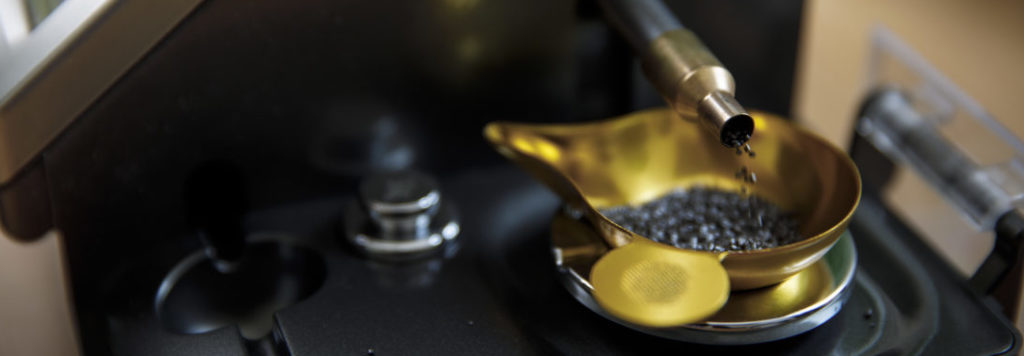
Vihtavuori Reloading Safety Rules
Reloading is an enjoyable and rewarding hobby that is easily conducted with safety. But like many other human endeavours, carelessness or negligence can make reloading your own ammunition hazardous. The essence of reloading safety is proper handling and storage of primers and powder. As important is strict following of the instructions given by the manufacturers of the reloading equipment as well as the reloading components.
Before you get started, read the reloading safety rules below and keep them in mind whenever reloading. Attention paid to detail and patience ensures safety and quality whenever developing loads for your firearm.
- Reload only when you can give it your undivided attention. Do not reload, when fatigued or ill. Develop your own reloading routine to avoid mistakes. Avoid haste, load at a leisurely place and keep in mind that absolutely no reloading under the influence of alcohol or drugs!
- Always wear proper eye protection. It is an unnecessary risk to reload without safety glasses.
- Store powder and primers out of reach of children and away from heat and open fire. Follow the manufacturer’s instructions on your powder canister. Never smoke during a reloading session!
- Keep no more powder than needed available. Immediately return the unused powder to its original factory container to preserve its identity and usable life time.
- Do not use any powder unless its identity is positively known. Scrap all unidentified powders according to the manufacturer’s instructions on your powder canister. Keep in mind that the trial-and-error method may lead to serious injury!
- Do not store primers in bulk! Bulk primers will very likely mass detonate. The blast of a few hundred primers corresponds to a hand grenade in a room. Do not force primers in any circumstances. Take special care when filling and handling auto primer feed tubes. Keep primers in their original factory packing until used. Return unused primers to their original packing.
- Do not use primers if their identity is lost. Discard them according to the manufacturer’s instructions.
- Start loading with the starting load according to the loading data. If there is no indication of the starting load, use a 15 % lower charge than the listed maximum load. Increase the charge using small steps watching for overpressure signs from the primer and the case head at each step. If you detect overpressures immediately stop shooting and reduce the charge. Immediately disassemble the defective cartridges. NEVER EXCEED THE MAXIMUM LOADS!
- Check visually the powder level in the cases so you are absolutely sure that you have no double powder charge. When a double powder charge is fired it may result in a gun damage, personal injury, even death.
- If you change the lot of any component or if you change any of the components of your reload, you must develop your load from the starting load again. A different component as well as a component from a different manufacturing lot may cause changes in cartridge pressure.
- You must absolutely follow the given cartridge overall lengths (C.O.L.) according to the reloading tables. The change in the bullet seating depth has a significant influence on the cartridge pressure.
- Never reduce loads under the listed starting load.
- Keep your reloading bench in good order. Clean up spilled powder and primers promptly and completely. Remember that the reloading bench is not a temporary store for other tools, used car spare parts etc.
- Use your reloading equipment according to the manufacturer’s recommendations. Study the instructions carefully and don’t hesitate to ask, if you don’t understand everything.
- Due to risk for high pressure in heavy loads we do not recommend using N570 powder in temperatures below -20 degrees Celsius / -4 degrees Fahrenheit. If using heavy loads in cold temperatures, we recommend using powder N568 instead. All other N500-series powders are safe to use in any temperature also below 0 °C / 32 F.
- Be safe, be conscientious!
Lead Exposure
A continuous lead exposure has been found out to create lead accumulation to living bodies, specially to the nervous system causing little by little serious physical impairment. Some unused reloading components as well as fired cases can contain lead or lead compounds, it is possible to a reloader to get exposed during reloading. Primers and bullets contain lead and it may be present as a residue in fired cartridge cases, too.
There are different ways lead may enter the body. However, the two most common are considered to be the mouth and the breathing. Therefore with simple precautions described underneath the possible lead exposure and its dangerous consequences can be avoided.
- WASH YOUR HANDS thoroughly with warm water and soap after shooting or reloading.
- DO NOT EAT OR DRINK during a reloading session. When handling fired cartridge cases the residual containing lead most likely gets to your hands. Therefore eating something requiring a straight hand contact during a reloading session hazards the reloader to lead exposure. Keep your hands away from your nose or your mouth during a reloading session.
- KEEP GOOD HOUSEHOLD AT YOUR RELOADING SITE. Regular cleaning prevents the accumulation of residuals. Use a damp cloth or mop to clean up the reloading bench as well as the floor underneath. DO NOT USE A VACUUM CLEANER! The use of it poses a potential risk of exposure due to the spilled powder it collects up. Furthermore, an ordinary vacuum cleaner more spreads than collects the dust containing residuals.. Do not use any carpet at your reloading site. Carpet is hard to keep dust-free and it can create static electricity that can accidentally fire a primer.
- PROTECT YOUR BREATHING AGAINST THE DUST IN THE RELOADING AREA. When using a dry tumbling media in cleaning the cartridge cases, keep in mind that the lead residue from the fired cases moves to the tumbling media, where it accumulates by use. Wear always a dust mask when pouring the dry cleaning media out of the tumbler and be careful not to spill the media on your reloading bench.
